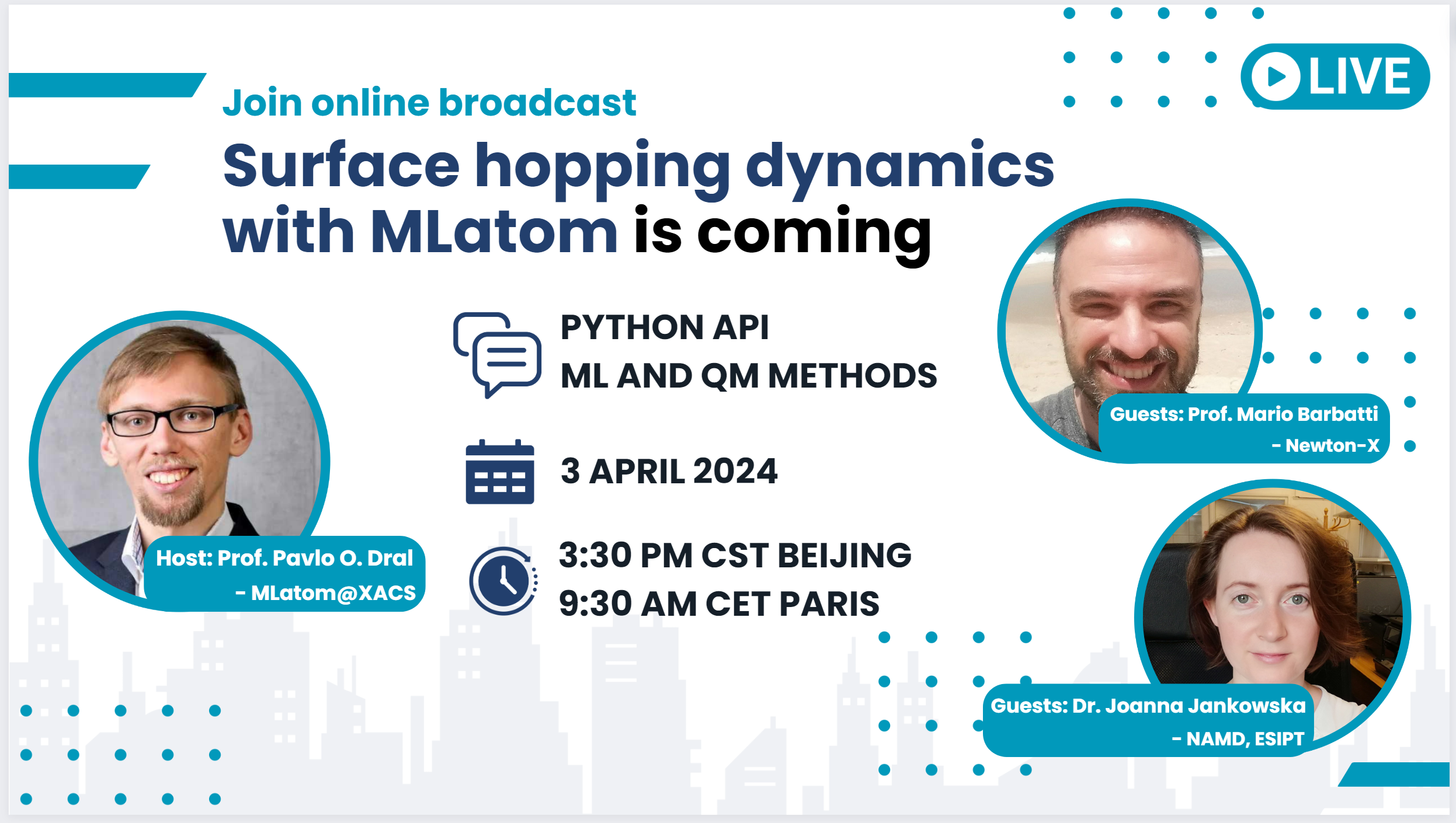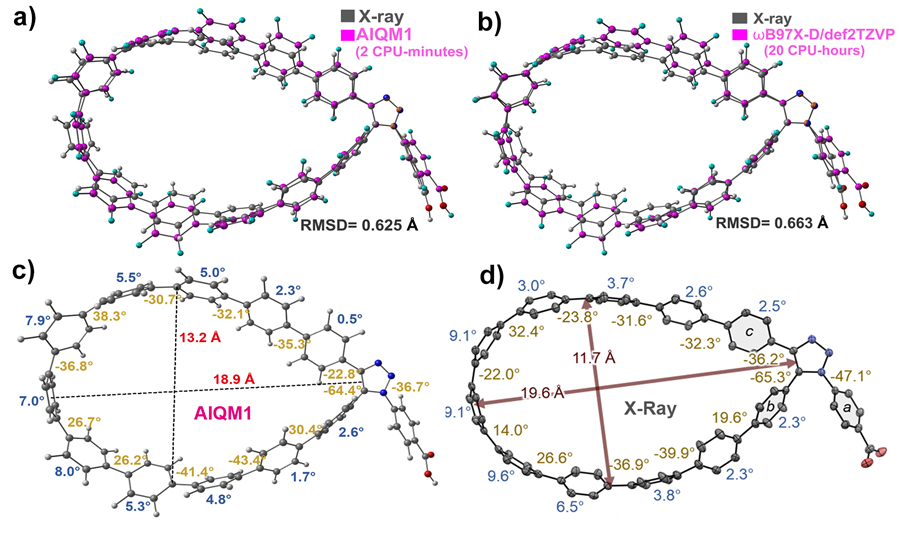Surface hopping dynamics with MLatom is coming: Join online broadcast!
MLatom@XACS makes AI-enhanced computational chemistry more accessible and supports both ground- and excited-state simulations with quantum mechanical methods, machine learning, and their combinations. We are happy to announce that we will release the new upgraded version of MLatom 3.3.0 that …
Surface hopping dynamics with MLatom is coming: Join online broadcast! Read more »

